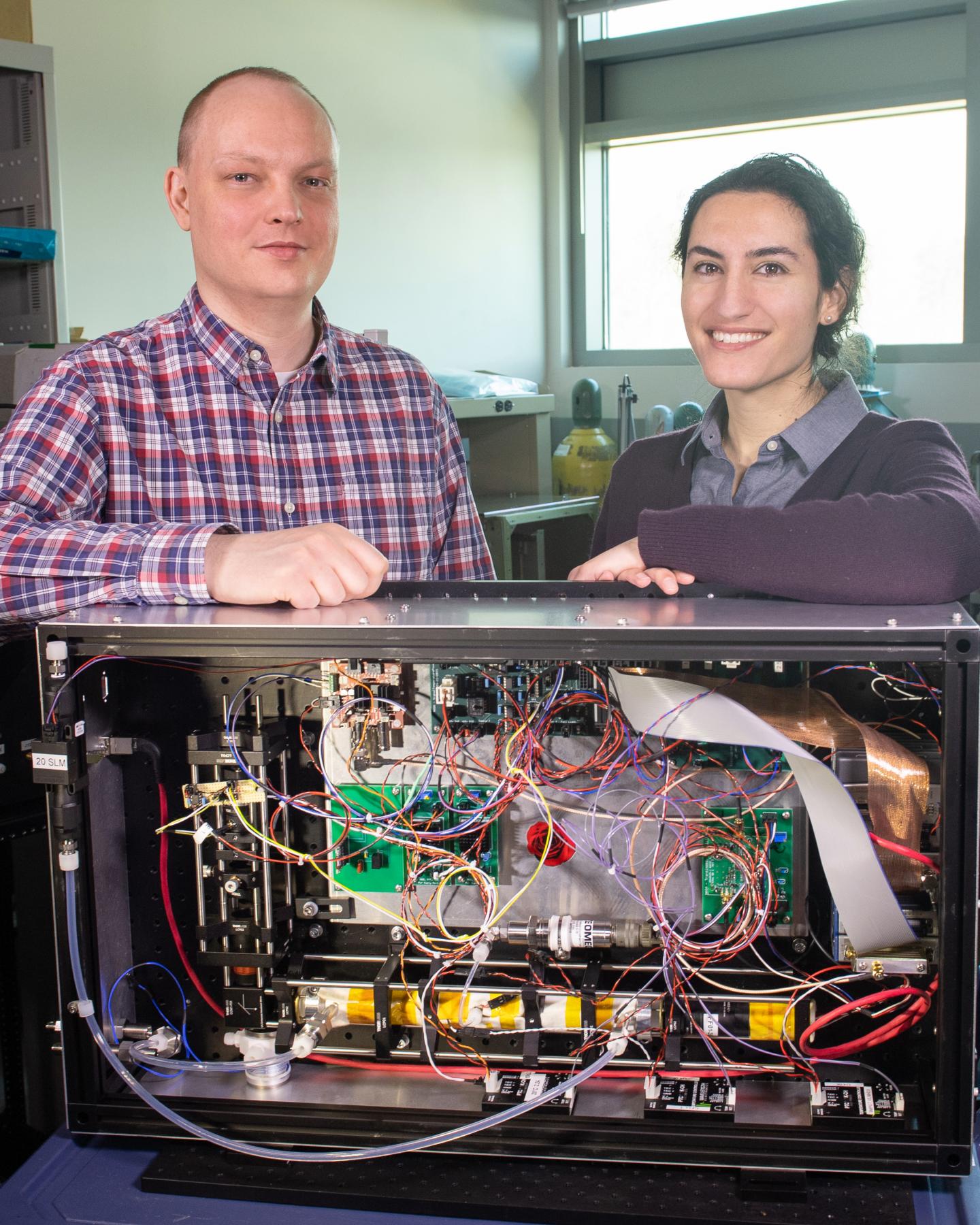
Credit: NASA/W. Hrybyk
NASA research scientist Tom Hanisco set out to build an instrument capable of measuring a short-lived chemical that cleanses the atmosphere of methane — a potent greenhouse gas — but found instead that his discovery outshined the best commercial instruments at measuring ambient levels of ozone.
His serendipitous discovery has led to the filing of a patent application for an instrument he calls the Rapid Ozone Experiment, or ROZE, and a berth aboard a NASA research aircraft, which will be carrying out a wildfire-related field campaign this summer.
“Research and development are never wasted,” said Hanisco, a scientist at NASA’s Goddard Space Flight Center in Greenbelt, Maryland. “When we started this development effort, ozone was the farthest thing from our minds.”
Good and Bad Ozone
While stratospheric ozone protects life from harmful ultraviolet radiation, when it’s in the troposphere it exacerbates respiratory diseases that kill hundreds of thousands of people each year. Tropospheric ozone is created by chemical reactions between oxides of nitrogen and volatile organic compounds. This happens when pollutants emitted by cars, power plants, industrial boilers and other sources react chemically in the presence of sunlight.
As a result, the U.S. Environmental Protection Agency regulates surface ozone levels and penalizes cities exceeding accepted levels.
ROZE Vital to understanding urban air quality
ROZE, which Hanisco believes scientists could use to determine how much ozone is deposited at the ground level, is a version of a prototype instrument he initially developed to measure hydroxyl, or OH.
Although short-lived and highly reactive, OH is nature’s detergent: it cleanses the atmosphere of methane, a devastatingly powerful greenhouse gas that is more effective than carbon dioxide at absorbing heat.
To better measure hydroxyl, Hanisco incorporated a tried-and-true measurement technique called gas filter correlation spectroscopy. Hanisco’s idea was to fill a cavity with hydroxyl produced by his prototype instrument. Once filled, the hydroxyl would block all the light at wavelengths hydroxyl absorbed. When he turned off the cavity to prevent hydroxyl from filling it, the instrument would then measure all the light affected by hydroxyl. The difference between the two measurements would be proportional to the abundance of hydroxyl in a column.
In testing, however, the team encountered difficulties when attempting to produce hydroxyl. An air leak produced ozone, which is made up of three oxygen atoms. “Ozone interfered, but we did a few quick numbers to see actually how much ozone we could see. As it turned out, the instrument was supersensitive to this molecule,” Hanisco said.
With some tweaking, Hanisco and his colleague, Reem Hannun, were able to improve the instrument’s sensitivity to ozone. According to Hanisco, ROZE is 100 times more precise than the best commercially manufactured optical instrument, Hanisco said, adding that his instrument is easy to build and relatively inexpensive.
Patent Filed; Aircraft Campaign on the Horizon
Hanisco has filed a patent application and now plans to fly the instrument on an aircraft campaign called FIREX-AQ, short for Fire Influence on Regional to Global Environments Experiment-Air Quality. The campaign, to be conducted aboard a DC-8 aircraft in July-August, will measure trace gases and aerosol emissions caused by wildfires in the western U.S. and agricultural fires in the southeastern U.S. Although testing ozone measurements isn’t a focus of FIREX-AQ, the flight opportunity gives Hanisco and his team a chance to operate ROZE under flight conditions.
Already ROZE has generated interest among researchers at government agencies and universities. Due to its high sensitivity and fast sampling rates, they believe it could fill a vital niche in understanding the ozone budget. Current ozone instruments are effective at measuring overall background levels, but aren’t adept at revealing how much gets deposited to the Earth’s surface.
Having a better understanding of the ozone budget is important to municipalities and states, particularly if an area falls into non-attainment and is penalized. “EPA has models that can predict how much ozone will form,” Hannun said. “But these models don’t really know how fast it’s being deposited. If we don’t know the rate, we can’t accurately model how ozone moves from one area to the next, or how long it will stick around once formed.”
As for creating an instrument sensitive to hydroxyl, Hanisco hasn’t given up. He submitted a patent for that concept, too, and plans to further develop the technology. “Even if you don’t win, ultimately you do win. That was certainly the case here,” Hanisco said.
###
For more Goddard technology news, go to: https:/
Media Contact
Lori Keesey
[email protected]
Original Source
https:/



